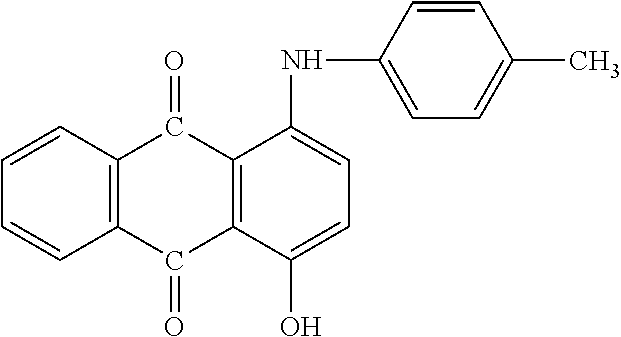Spectacle lens
a spectral lens and lens body technology, applied in the field of spectral lenses, can solve the problems of affecting the overall light transmittance, and affecting the overall light transmittance, and achieve the effect of high total light transmittan
- Summary
- Abstract
- Description
- Claims
- Application Information
AI Technical Summary
Benefits of technology
Problems solved by technology
Method used
Image
Examples
example 1
Virgin Pellet
[0062]0.3 part of 2-(2H-benzotriazol-2-yl)-4-(1,1,3,3-tetramethylbutyl)phenol (UV-1, absorption maximum at 340 nm) as the ultraviolet absorber (A), 0.04 part of 2,2′-methylenebis[4-(1,1,3,3-tetramethylbutyl)-6-(2H-benzotriazol-2-yl)phenol] (UV-2, absorption maximum at 349 nm) as the ultraviolet absorber (B), 0.02 part of pentaerythritol tetrakis(3-laurylthiopropionate) (HS-1) as the thioether-based compound (C), 0.25 part of a mixture of triglyceride stearate and stearyl stearate (Rikemal SL900 (trade name) of Riken Vitamin Co., Ltd.) as a release agent, 0.03 part of the following phosphorus-based heat stabilizer (HS-2) and 0.3 ppm of a compound represented by the following formula as a bluing agent were added to 100 parts of a polycarbonate resin powder having a viscosity average molecular weight of 22,400 obtained by the interfacial polymerization of bisphenol A and phosgene in accordance with a commonly used method and fully mixed with the polycarbonate resin powder ...
example 9
Virgin Pellet
[0069]0.33 part of 2-(2H-benzotriazol-2-yl)-4-(1,1,3,3-tetramethylbutyl)phenol (UV-1) as the ultraviolet absorber (A), 0.02 part of 2-[5-chloro(2H)-benzotriazol-2-yl]-4-methyl-6-(tert-butyl)phenol (UV-3) as the ultraviolet absorber (B), 0.02 part of pentaerythritol tetrakis(3-laurylthiopropionate) (HS-1) as the thioether-based compound (C), 0.25 part of a mixture of triglyceride stearate and stearyl stearate (Rikemal SL900 (trade name) of Riken Vitamin Co., Ltd.) as a release agent, 0.03 part of the same phosphorus-based heat stabilizer (HS-2) as used in Example 1 and 0.8 ppm of the same bluing agent as used in Example 1 were added to 100 parts of a polycarbonate resin powder having a viscosity average molecular weight of 23,900 obtained by the interfacial polymerization of bisphenol A and phosgene in accordance with a commonly used method and fully mixed with the polycarbonate resin powder by a tumbler, and the resulting mixture was pelletized by a 30 mm-diameter vente...
PUM
| Property | Measurement | Unit |
|---|---|---|
| weight ratio | aaaaa | aaaaa |
| wavelength | aaaaa | aaaaa |
| wavelength | aaaaa | aaaaa |
Abstract
Description
Claims
Application Information
 Login to View More
Login to View More - R&D
- Intellectual Property
- Life Sciences
- Materials
- Tech Scout
- Unparalleled Data Quality
- Higher Quality Content
- 60% Fewer Hallucinations
Browse by: Latest US Patents, China's latest patents, Technical Efficacy Thesaurus, Application Domain, Technology Topic, Popular Technical Reports.
© 2025 PatSnap. All rights reserved.Legal|Privacy policy|Modern Slavery Act Transparency Statement|Sitemap|About US| Contact US: help@patsnap.com

